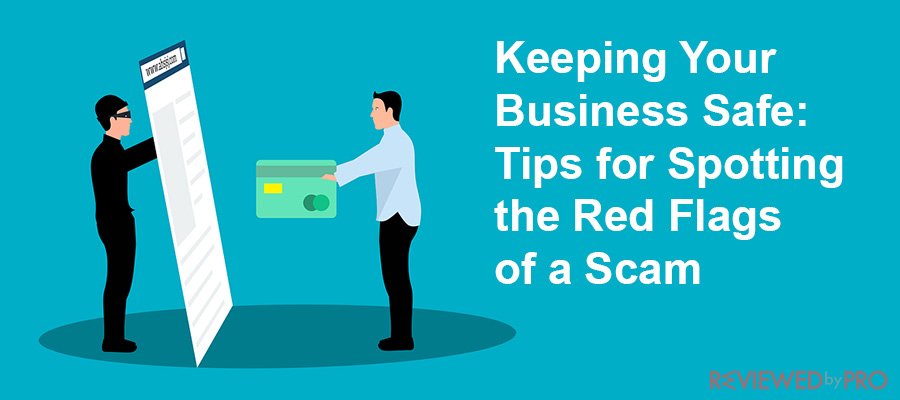
Fraudsters and cybercriminals are constantly developing new ways to exploit their victims and gain access to money or confidential personal information they can use in additional malicious activities. This puts everyone in danger, from individuals to businesses, organizations, or even governments. It is time that online safety becomes a priority.
Every business owner knows how important it is to ensure that every part of the operations runs smoothly, and scammers can put a serious dent into your plans. Not only can the attack target your financial resources, intellectual property, and confidential data, but it can also have long-term consequences such as causing significant reputational damage. By educating yourself about the red flags that can indicate fraud, you can recognize the fraudulent attempts before they happen and protect your business and its customers.
Most common signs indicating fraud
While there are numerous different methods fraudsters and scammers can use to exploit your business, they often share some things in common, making it easier to recognize the fraud attempt. The truth is that even though they are constantly modifying their attacks to make them harder to detect, they still use similar types of attacks that allow businesses to determine common red flags. The more red flags you are aware of, more effective your cybersecurity strategy can be:
- Suspicious phone calls asking you to provide them with confidential information.
- Unknown source requesting remote access to your computer.
- Unfamiliar email demanding an action such as paying an invoice or downloading an attachment.
- Phone calls or emails that have a sense of urgency
- Grammar mistakes in the email, especially in the sender's email address
- Utility or government agency asking for immediate payment and threatening with dire consequences
- Suggestions you pay the late invoice with a gift card or e-voucher
- Deal from potential business partners that sounds too good to be true
- Several failed login attempts
- Many customers accessing your website from the same IP address
- Numerous changes to a single account in one session, such as changing the address, password, and even the names
- Inconsistencies in order data such as IP and shipping address not matching.
- Users accessing their account from an unusual location like a different county
- Orders that are significantly larger or smaller than usual
- A string of declined transactions
- Customers making multiple orders by using several different credit cards
- Several new purchases coming from a country you never received an order from
While this might seem like a lot of red flags you have to keep an eye on, a lot of them won't lead to fraud if you and your employees learn to trust your common sense, and you can prevent others by implementing cybersecurity strategies. SEON explains that a simple phone lookup tool can give you additional data about your users, allowing you to make more informed decisions. By discovering the number's validity, if it is connected to any messenger apps and even their digital footprint, you will have a clearer picture of them.
What can you do to reduce the risk of fraud affecting your business?
We live in a time when fraud has started infiltrating every part of our lives. According to the World Economic Forum (WEF), that will not change as they predict that cybercrime will become the second most-concerning global risk over the next decade. Considering that if considered a country, cybercrime already is the third largest economy in the world, that is not that hard to believe. This is why every business must have an effective cybersecurity strategy in place.
1. Raise cyber awareness within the company
Your employees are the core of your business and one of its biggest risks. This can be because of weak and repetitive passwords, oversharing on social media, or other dangers to online safety, as noted by ID Agent. By raising cyber awareness in your company, you empower them to recognize and prevent fraud and scams that might affect your business.
2. Conduct regular security audits
Fraudsters are constantly looking for any security vulnerability that can give them access to a company. By conducting regular security audits, you can discover those vulnerabilities before them and fix them before fraudsters can exploit them.
3. Implement cybersecurity strategy
A proper cybersecurity strategy is essential for any company that wants to stay in business. Cybercriminals constantly update their malicious actions, while companies rely on the same old methods such as antivirus and firewall. While that is an excellent start, it is no longer enough. Implementing a cybersecurity strategy specifically crafted to your business's needs can make all the difference.
4. Stay informed
Fraudsters will never stop coming up with new ideas, which is why you must stay on top of the latest trends to ensure your business can keep up.
Conclusion
Any business owner can tell you that running a company comes with various challenges, fraud quickly becoming one of the biggest ones. Luckily, you can prevent it from affecting your business by staying informed about the red flags that might indicate fraudulent behavior and taking the proper steps to avoid it.




